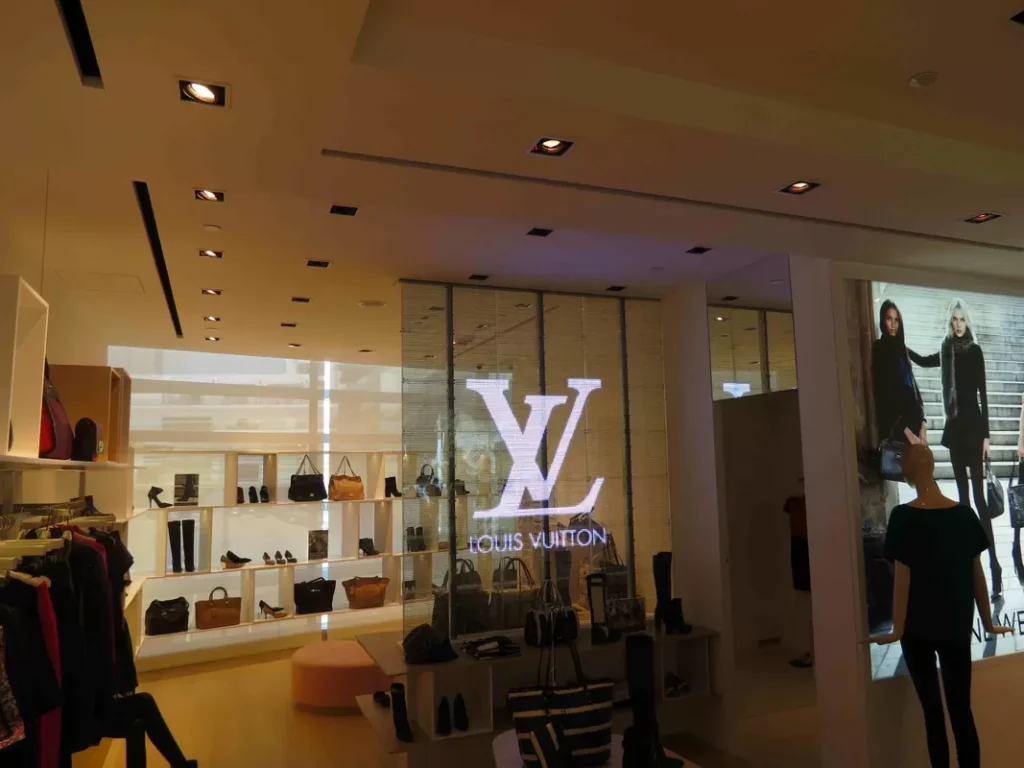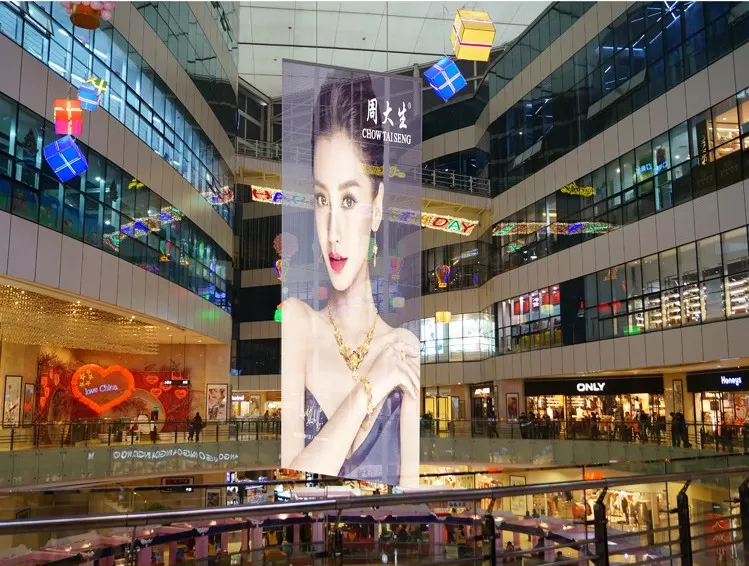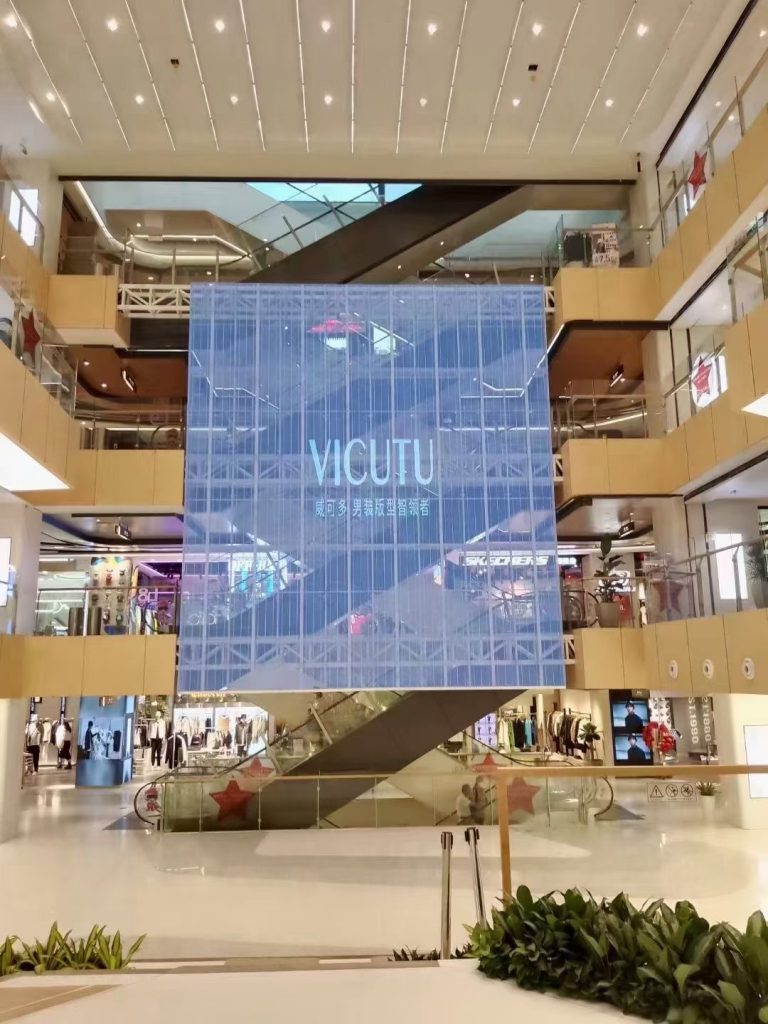P3.91 LED transparent screen, as the name suggests, “transparency” is its biggest feature. The factor that determines “transparent” is “transmittance”. The level of transparency also determines the quality of the LED transparent display. Therefore, we will calculate the transparency of the LED transparent screen to select better products. .
For customers who have never been in contact with LED transparent screens and have never seen the real thing, “transparent screen” is definitely a word with enough sense and full of sci-fi color. When it comes to transparent screens, many people may have high-tech images in film and television works and concept product promotional films.

But the LED transparent screen has nothing to do with these. Most of the high-tech pictures in the movie are virtual technology, which reflects a future technology and a direction of future development of transparent display.
Back to the topic, how should we calculate the transparency of the P3.91 LED transparent screen?
To calculate permeability, first we need to understand the concept of permeability. The transmittance is a physical word, which indicates the efficiency of the transmitted light of the display device, etc. The transmittance of the transparent screen is defined as the percentage of the luminous flux actually transmitted by the screen and the luminous flux that is completely transmitted. The simplest calculation formula is : Transmittance = (transparent space/light bar interval) * 100%
For the calculation of the transparency of transparent screens, there is no industry standard in the LED transparent display industry for the time being. Therefore, LED transparent screen manufacturers have different calculation methods for the “transparency” or “transmittance” of their own products. The main logic is as follows:
The transmittance is often only calculated for the main part of the light bar and the light board, that is, the shading of the power box is not included, the shading of the box frame is not included, and the shading of PC, acrylic plate or glass (single-layer or even double-layer) is not included. counted.

Taking the P12 transparent screen as an example, it is known that the PCB thickness of the light bar is 2m, and the distance between the light bar and the light bar is 12mm, then the light transmission space is 10mm, so the light transmittance=10/12*100%=83.3%
Therefore, the “transparency” in the technical parameters of the LED transparent screen company’s products is the result of a variety of different calculation formulas. Users should actually experience the transparency of the transparent screen when choosing LED transparent screen products. Factors to choose carefully. Let’s take the P3.91 LED display as an example.
P3.91 Specific Analysis of LED Transparent Display
In the field of LED transparent screens, different types of products have different application requirements. It is not a random choice. The most popular model on the market is the transparent LED large screen P3.91. Below we make a specific analysis of this product:
The spacing of the LED transparent screen P3.91 is actually 3.91mm/7.81mm, that is, the spacing between the horizontal lamp beads is 3.91mm, and the vertical lamp bead spacing is 7.81mm. So its pixel density we can calculate (1000÷3.91)×(1000÷7.81)=32256dot/m².
The greater the pixel density, the clearer the display effect, so the P3.91 transparent LED large screen display effect is clear. But the clearer it is, the more expensive the screen per unit area is. This is also easy to understand: because the number of lamp beads per unit area is more, the lamp beads are one of the main factors affecting the price in the transparent screen.

But clarity and transparent screens are contradictory to some extent. The clearer the screen, the lower the transparent screen, because the density of the lamp beads and the distance between the light bars become smaller, so the occlusion will increase, and of course the permeability will be lower. At present, the transparency of LED transparent screen P3.91 can reach about 65%. JYLED has further improved the permeability by up to 75% by optimizing the structure of the power supply box and light bar without affecting the product stability and playback effect.
The higher-definition screen is more suitable for close-up viewing. Therefore, the transparent led large screen P3.91 is a screen for close viewing. It is usually suitable for a viewing distance of 4 to 20 meters. Therefore, it is more used in the field of indoor window and shopping mall atrium. The viewing distance in these areas should be short, and the playback clarity is high. And also need a certain permeability. Overall, P3.91 is the most suitable. Viewed at close range, then the area is generally not very large. Therefore, its application area is mostly within 60 square meters.
Summary: Indoor close-up viewing, the screen area is not large, and there are requirements for playback clarity and transparency, then the P3.91 transparent LED screen is your best choice.